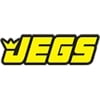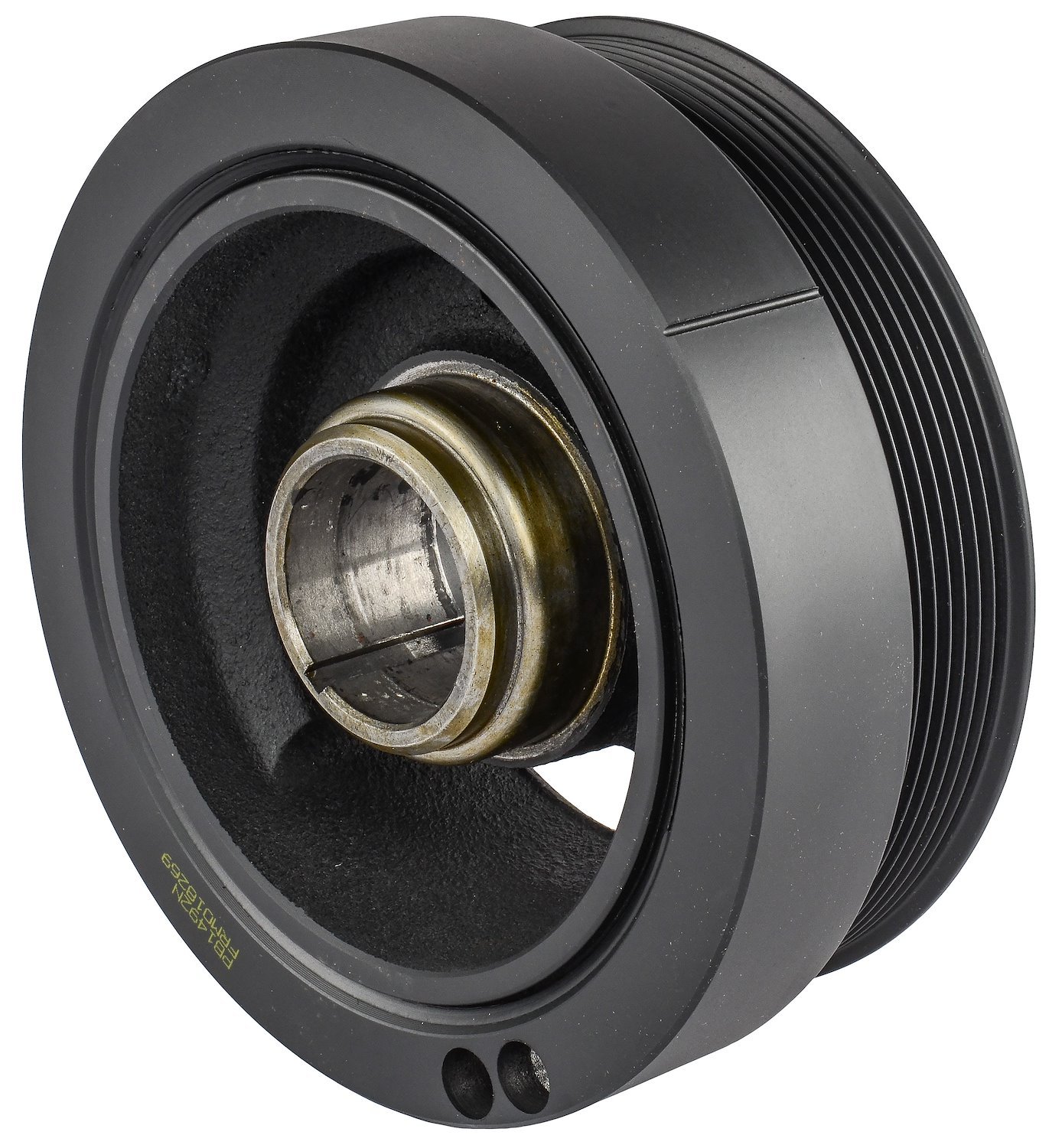Ford Harmonic Balancers
JEGS 555-51690 Harmonic Balancer Features:
- Perform Up to 6500 RPM
- Hubs are Made from Spherical Graphite
- Pressure Bonded Inner Hub and Outer Ring
- Easy-to-See Top Dead Center Mark
JEGS 555-51690 Harmonic Balancer Specifications:
- Overall O.D.: 7.130 in.
- Nose O.D:. 2.500 in.
- Overall Width: 2.740 in.
- Crank Bore: 1.740 in.
- Ring Width: 2.740 in.
- Bolt Holes: 3
- Counterweight Balance: Hub weighted
- Crank Trigger/Exciter Plate: No
- Timing Mark: Yes
- Number of Integrated Pulleys: 1 Serpentine
- Pulley Grooves: 8
- Pulley OD 1: 6.540 in.
FAQ
How do I know when to replace my harmonic balancer?
- Replace the harmonic balancer if you notice visible damage, rubber deterioration, or experience engine vibration.
What is the life expectancy of a harmonic balancer?
- Harmonic balancer lifespan varies, but it's recommended to inspect and consider replacement every 60,000 to 100,000 miles.
Is it hard to replace a harmonic balancer?
- Replacing a harmonic balancer involves specific tools. If inexperienced, seek professional assistance for proper installation.
What happens if you don't fix the harmonic balancer?
- Ignoring a damaged harmonic balancer can lead to severe engine damage, affecting the crankshaft and other components.
Specifications:
Does this fit a 2000 7.3 f250 powerstroke diesel
Motor Vehicles
WARNING: Motor vehicles contain fuel, oils and fluids, battery posts, terminals and related accessories which contain lead and lead compounds and other chemicals known to the State of California to cause cancer, birth defects and other reproductive harm. These chemicals are found in vehicles, vehicle parts and accessories, both new and as replacements. When being serviced, these vehicles generate used oil, waste fluids, grease, fumes and particulates, all known to the State of California to cause cancer, birth defects, and reproductive harm.
Tools:
WARNING: Some dust created by power sanding, sawing, grinding, drilling, and other construction activities contains chemicals known to the State of California to cause cancer and birth defects or other reproductive harm. Some examples of these chemicals are: lead from lead-based paints, crystalline silica from bricks and cement and other masonry products, and arsenic and chromium from chemically treated lumber. Your risk from exposure to these chemicals varies, depending on how often you do this type of work. To reduce your exposure, work in a well-ventilated area and with approved safety equipment, such as dust masks that are specially designed to filter out microscopic particles.
Electrical Cords
WARNING: The wires of these products contain chemicals known to the State of California to cause cancer and birth defects or other reproductive harm. Wash hands after handling.




